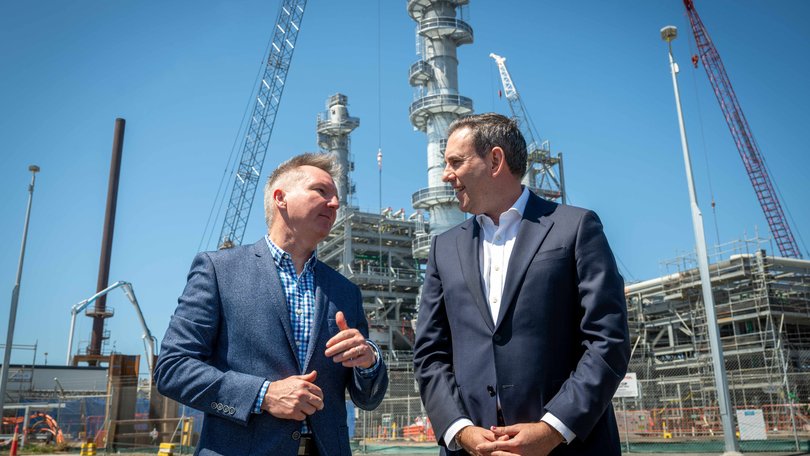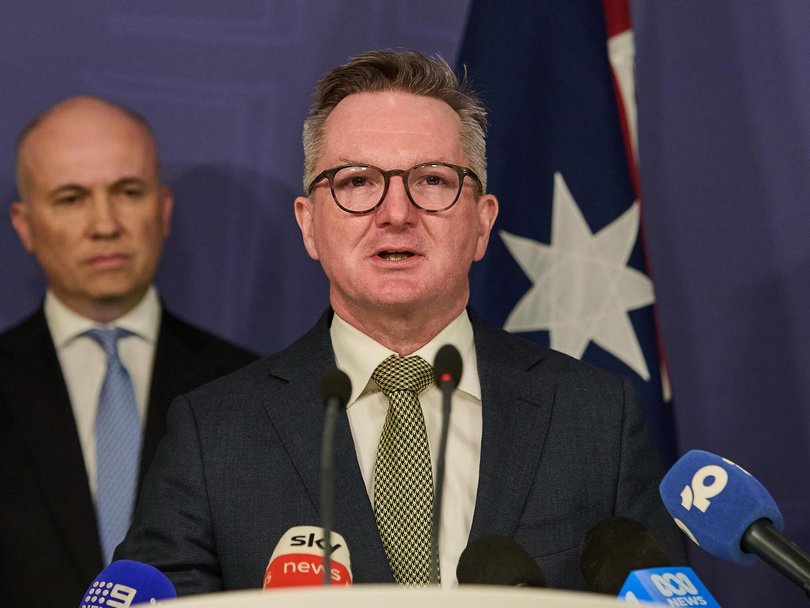Net Zero sum game: ‘Dodgy’ $2.2 trillion climate forecast given by Treasury faces scrutiny

A top economist has suggested Treasury’s forecast of a $2.2 trillion economic benefit from the 2035 climate target has been exaggerated.
Under a baseline scenario, Treasury forecast the economy will be 28 per cent larger by 2035 and 81 per cent bigger by 2050, relative to now, as a result of a plan to reduce carbon emissions by 62 to 70 per cent within the next decade.
It also forecast that gross domestic product for every Australian would be $12,000 higher in a decade from now, growing to $36,000 by 2050. “Australia’s ambitious and achievable plan to reduce emissions will support continued economic growth, higher living standards and employment,” it said.
Sign up to The Nightly's newsletters.
Get the first look at the digital newspaper, curated daily stories and breaking headlines delivered to your inbox.
By continuing you agree to our Terms and Privacy Policy.AMP chief economist Shane Oliver suggested that modelling, forecasting a $2.2 trillion economic expansion, overstates the benefits by ignoring the cost of higher electricity prices.
“Those sorts of numbers are all bandied about. They’re all a bit dodgy,” he told The Nightly. “That sort of modelling is always very dangerous.
“They’ve done the best they can but I’m pretty sceptical of this sort of modelling. That sort of modelling is very difficult to get right because if you change one variable slightly, you end up with a radically different outcome and I guess the big risk is that the transition leads to higher energy prices for longer which then acts as a cost on the economy.”
Consumer pain
Dr Oliver said the Treasury modelling underestimated the cost of consumers having to pay for the rewiring of the electricity network for renewable energy to allow Australia to go from a 43 per cent target by 2030 to a more ambitious goal by 2035.
“You want to say the benefit of the transition and your modelling is somewhat biased,” he said. “You’re trying to speed it up, then you’re naturally looking at higher costs associated with that transition.”
Energy comparison company Econnex estimated Australians would pay an average annual power bill of $1994 in 2025-26. Bigger families typically pay a lot more.

The Climate Change Authority on Thursday cited a prediction of annual power bill savings of $1000 or 20 per cent in a decade from now by the Australian Energy Market Commission, based on a coordinated rollout of more renewable energy.
Climate Change Minister Chris Bowen today insisted that prediction wasn’t a government commitment. “That’s not a political promise. It’s a statement of modelling by expert agencies,” he told reporters.
Gas shortage
One problem reaching the 2035 target is an expected increase in natural gas imports, the result of a shortage of domestic gas production.
“It’s alright to up the target but if we haven’t done enough to ensure gas supplies, it might turn out to be a worse scenario where we end up with higher prices and don’t end up hitting the target,” Dr Oliver said.
HSBC chief economist Paul Bloxham agreed that natural gas needed to play a bigger role in domestic energy use as part of the transition to net zero.
“It can play more of a role. It is one of the products we need to use to make the energy transition from coal-based energy production towards renewables,” he said.
“In that transition, there is some role for gas. That will continue to be a part of what we export to the world for quite some time and that’s going to be something that continues to support our economy.”
Action call
Treasury forecast that Australia’s economy would be $1.2 trillion smaller, compared with its baseline scenario of $2.2 trillion growth by 2050, if there was a “disorderly transition” to renewable energy.
It didn’t cite an overall cost to taxpayers under the new 2035 target but noted decarbonising the economy would cost the Budget $70 billion “over the coming decades” with $20 billion of that dedicated to the Rewiring the Nation plan to build new transmission networks.
Mr Bloxham suggested the Treasury modelling was needed to encourage investment into renewable energy so Australia could reach its 2035 target and make the transition happen sooner to spare consumers higher electricity bills later.
“We’re at a point where there’s a gap where the old, fossil fuel capacity is going to come to the end of its working life before we’ve got sufficient renewable capacity, including the transmission networks to meet the demand,” he said.
“We need to set the goals. Seek to achieve the goals and move as fast as we can to make sure that gap is as small as possible.
“It needs to be sped up rather than slowed down and so the way you speed that up is by setting credible targets and trying to mobilise private sector capital as well as public sector capital.”
Both sides of politics support a net zero by 2050 goal.

